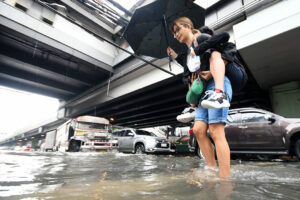
Integrated land use-flood management plan may fix chronic flooding
THE PHILIPPINE government should tie the various land use programs of each local government unit into a consolidated regional plan as part of efforts to address chronic nationwide flooding, a Cabinet official said on Thursday.
Resolving the country’s flooding woes requires land use planning coordination at the regional level and the integration of flood mitigation programs for the 18 major river basins nationwide, Science and Technology Secretary Renato U. Solidum, Jr. said during a congressional budget briefing.
“We cannot allow the local level to implement their own land use [plans],” he said in mixed English and Filipino. “We should have an integrated land use [plan] at the regional… and provincial level.”
“We need to have an integrated river basin management for upstream to downstream areas that can be affected [by flooding],” he added.
The Philippines has been undergoing a repetitive cycle of mass flooding after every torrential downpour during the rainy season despite billions of pesos going into flood mitigation efforts yearly.
The Department of Public Works and Highways (DPWH) requested a P298-billion budget for flood mitigation projects next year, Secretary Manuel M. Bonoan told congressmen in an earlier budget briefing.
Improper land use policies could worsen flooding due to the construction of impermeable structures, impeding waterflow, according to Mr. Solidum.
“The combination of the increasing amount of rain due to climate change and the urbanization of areas will really cause a lot of flooding unless the structures that manage the flow of water will not be there,” he said, noting the need to widen the country’s drainage systems.
He said efforts should also turn towards dredging the Laguna Lake to effectively increase its water capacity.
The Laguna Lake is the largest inland waterbody in the Philippines located near Metro Manila and the provinces of Laguna and Rizal.
“The lake acts as [a] water storage reservoir, and a reduced water storage capacity will mean putting… people living in flood risk zones in Metro Manila and around Laguna de Bay at risk,” a 2017 Laguna Lake Development Authority report stated.
The government should also look at constructing structures that could temporarily retain rainwater to reduce urban flooding, Mr. Solidum said. “We need a lot of water retention basins and dams.” — Kenneth Christiane L. Basilio



